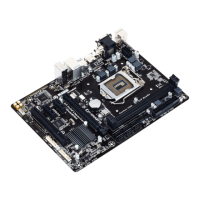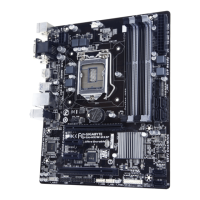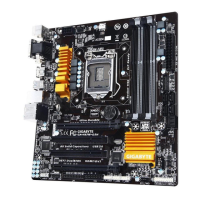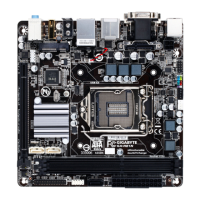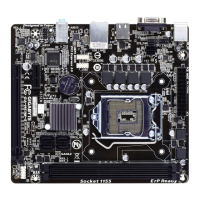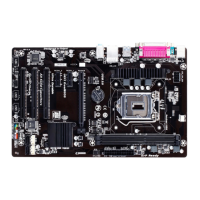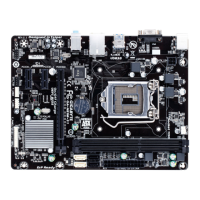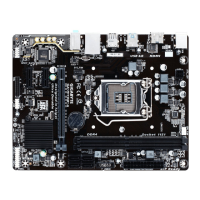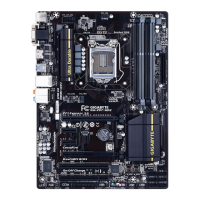Do you have a question about the Gigabyte GA-H97-D3H and is the answer not in the manual?
Guidelines for safely installing hardware components to prevent damage.
Detailed technical specifications of the motherboard and its components.
Step-by-step instructions for installing the CPU and its cooling solution.
Guide for installing DDR3 memory modules and understanding dual channel configuration.
Procedures for installing expansion cards into PCI Express and PCI slots.
Explanation of all external ports and connectors on the motherboard's back panel.
Identification and pinouts for internal headers on the motherboard.
Overview of the initial boot screen and available function keys.
Introduces the two main BIOS interface modes: Startup Guide and Smart Tweak.
Detailed settings for CPU, memory frequencies, voltages, and system monitoring.
Displays system details like BIOS version, CPU, memory, and allows language/time settings.
Configuration options for boot order, security, fast boot, and virtualization.
Settings for onboard devices like graphics, audio, LAN, USB, and SATA controllers.
Options for controlling system power states, wake-up events, and energy saving.
Options to save BIOS changes, load defaults, or exit the setup utility.
Steps to install SATA drives and configure the SATA controller mode in BIOS.
Guide for setting up RAID arrays using UEFI mode, specific to Windows 8/8.1.
Instructions for configuring RAID arrays using the legacy RAID ROM utility.
Process for installing the necessary drivers and the operating system for SATA configuration.
Instructions on how to install drivers using the provided motherboard driver disk.
Contains legal notices, RoHS, WEEE, and FCC compliance information.
| Non-ECC | Yes |
|---|---|
| Memory channels | Dual-channel |
| Memory slots type | DIMM |
| Number of memory slots | 4 |
| Supported memory types | DDR3-SDRAM |
| Maximum internal memory | 32 GB |
| Supported memory clock speeds | 1333, 1600 MHz |
| Processor socket | LGA 1150 (Socket H3) |
| Processor manufacturer | Intel |
| Compatible processor series | Intel® Celeron® |
| USB 2.0 connectors | 3 |
| Number of SATA connectors | 7 |
| Number of Parallel ATA connectors | - |
| USB 3.2 Gen 1 (3.1 Gen 1) connectors | 1 |
| RAID levels | 0, 1, 5, 10 |
| Supported storage drive interfaces | SATA |
| HDMI version | 1.4a |
| Headphone outputs | 6 |
| USB 2.0 ports quantity | 2 |
| Bluetooth | No |
| Audio chip | Realtek ALC1150 |
| Component for | PC |
| Motherboard chipset | Intel® H97 |
| Audio output channels | 7.1 channels |
| Motherboard form factor | ATX |
| Maximum resolution | 4096 x 2160 pixels |
| Maximum graphics card memory | 1000 MB |
| BIOS type | UEFI AMI |
| ACPI version | 5.0 |
| BIOS memory size | 64 Mbit |
| Bundled software | Norton Internet Security (OEM version)\\r Intel Rapid Start Technology\\r Intel Smart Connect Technology\\r Intel Smart Response Technology\\r Intel Small Business Advantage\\r cFosSpeed |
| Depth | 214 mm |
|---|---|
| Width | 305 mm |

